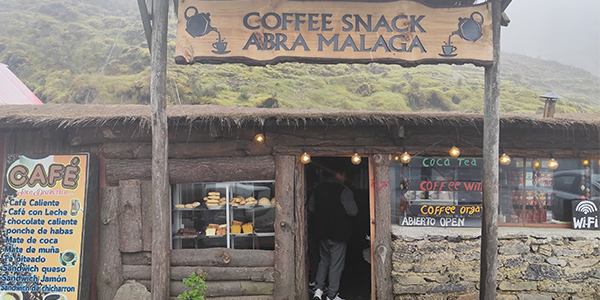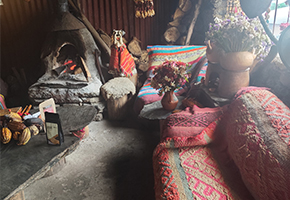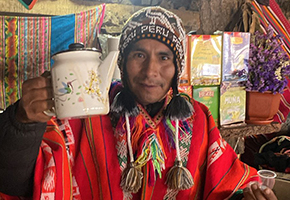Which Trek to Machu Picchu Is Right for You?
Choosing between the Salkantay Trek and the Inca Trail is one of the most common dilemmas for travelers heading to Machu Picchu. Both treks are unforgettable journeys through the Andes, but each offers a unique experience. This Salkantay vs Inca Trail comparison will help you decide which adventure suits your travel style, budget, and expectations.
The Inca Trail – History and Tradition
The Inca Trail is the most famous trekking route to Machu Picchu. It follows the original stone paths built by the Incas, passing through archaeological sites, cloud forests, and mountain passes. Its biggest highlight is arriving directly at Machu Picchu through the Inti Punku (Sun Gate) at sunrise, a once-in-a-lifetime experience for many hikers.
Distance: 42 km (26 miles) over 4 days.
Difficulty: Moderate, with steep climbs and high altitude.
Limitation: Only 500 permits per day (including staff), so it sells out months in advance.
The Salkantay Trek – Nature and Adventure
The Salkantay Trek is the most popular alternative to the Inca Trail. Known for its dramatic landscapes, it takes you past glaciers, turquoise lakes, and lush jungles before reaching Aguas Calientes and Machu Picchu. It offers more variety in scenery and fewer restrictions on permits.
Distance: Around 72 km (45 miles) over 5 days.
Difficulty: Moderate to challenging, especially crossing the Salkantay Pass at 4,650 m (15,255 ft).
Advantage: No strict permit limits, more affordable, and less crowded.
Key Differences – Salkantay vs Inca Trail
1. Scenery
Inca Trail: Archaeological ruins, stone paths, and subtropical forests.
Salkantay: Snow-capped peaks, turquoise lakes, waterfalls, and cloud forest.
2. History vs Nature
Inca Trail: Perfect for history lovers wanting to walk on ancient Inca paths.
Salkantay: Ideal for adventure seekers drawn to natural landscapes and variety.
3. Accessibility
Inca Trail: Requires booking 6–12 months in advance due to limited permits.
Salkantay: Easier to book last minute, as there are no strict permit restrictions.
4. Difficulty
Inca Trail: Shorter but with steep ascents and descents.
Salkantay: Longer and higher altitude, making it more physically demanding.
5. Arrival to Machu Picchu
Inca Trail: Direct arrival through the Sun Gate, iconic entrance.
Salkantay: Ends in Aguas Calientes with bus or hike up to Machu Picchu.
Make Your Choice and Book Your Adventure
Whether you choose the Inca Trail for its history or the Salkantay Trek for its natural beauty, both routes guarantee an unforgettable journey to Machu Picchu. Our expert team is ready to help you book the trek that matches your preferences.
Contact us today to secure your spot and experience the adventure of a lifetime!
What you should do before booking Salkantay Trek to Machu Picchu
1. What is the Salkantay Trek, and how does it compare to the Inca Trail?
The Salkantay Trek is an alternative route to Machu Picchu, offering breathtaking landscapes, including snow-capped mountains, cloud forests, and high-altitude passes. Unlike the Inca Trail, the Salkantay Trek does not require a permit and is less crowded, providing a more adventurous experience.
2. How many days does the Salkantay Trek take to reach Machu Picchu?
The standard Salkantay Trek takes 5 days and 4 nights, covering approximately 72 km (45 miles). However, there are shorter and longer variations of the trek available.
3. What is the difficulty level of the Salkantay Trek?
The Salkantay Trek is considered moderate to challenging, as it involves hiking at high altitudes and steep ascents. The highest point is the Salkantay Pass at 4,650 m (15,255 ft). Proper acclimatization is recommended before starting the trek.
4. Do I need a permit to hike the Salkantay Trek?
No, unlike the Inca Trail, the Salkantay Trek does not require a special permit. However, you do need an entrance ticket for Machu Picchu, which should be booked in advance.
5. What is the best time of year to hike the Salkantay Trek?
The best time to hike the Salkantay Trek is during the dry season (April to October). The weather is more stable, with clear skies and less rain. The rainy season (November to March) can make the trail muddy and challenging.
6. What should I pack for the Salkantay Trek?
Essential items include:
- Hiking boots (waterproof and comfortable)
- Warm layers (temperatures drop at night)
- Rain jacket or poncho
- Sleeping bag (suitable for cold weather)
- Sun protection (hat, sunglasses, sunscreen)
- Water bottle and purification tablets
- Basic first aid kit
7. Is altitude sickness a concern on the Salkantay Trek?
Yes, altitude sickness can be an issue, especially at the Salkantay Pass (4,650 m). It is recommended to spend a few days in Cusco (3,400 m) before the trek to acclimatize. Staying hydrated, avoiding alcohol, and chewing coca leaves can help with symptoms.
8. How do I get to Machu Picchu from the end of the Salkantay Trek?
After reaching Hidroelectrica, you have two options:
- Hike 3 hours to Aguas Calientes.
- Take a 30-minute train from Hidroelectrica to Aguas Calientes.
From Aguas Calientes, you can hike or take a bus up to Machu Picchu.
9. Are there accommodation options along the Salkantay Trek?
Yes, most trekking companies provide campsites or eco-lodges along the route. Some upgraded tours offer more comfortable accommodations, such as glass cabins or domes. The final night is usually spent in a hotel in Aguas Calientes.
10. Can I visit Machu Picchu without hiking the Salkantay Trek?
Yes, you can take a train from Cusco to Aguas Calientes, followed by a short bus ride or hike up to Machu Picchu. This is the most popular option for visitors who prefer not to hike.
You must be interested
- Salkantay Trek to Machu Picchu
- Salkantay Trail 5 days 4 nights
- Salkantay Trek difficulty level
- Salkantay vs Inca Trail comparison
- Best time to hike Salkantay Peru
- Salkantay Trek tour price 2026
- Guided Salkantay Trek packages
- Salkantay Trek altitude and acclimatization
- Salkantay Trekking tours from Cusco
- Salkantay Trek full itinerary
Salkantay Travel Information
- Salkantay Trek Food: What You’ll Eat on the Trail
- Birds of the Salkantay Trek: Species You Can Spot on the Route
- Is the Salkantay Trek Dangerous?
- Salkantay Trek Altitude: Heights Along the Route
- Flora and Fauna in Salkantay Trek
- Altitude Sickness on the Salkantay Trek
- Salkantay Trek Difficulty: How Hard Is the Route?
- Salkantay Trek FAQs: Answers to Common Questions
- Best Time to do Salkantay trek
- Training for Salkantay Trek: How to Get Ready
- How long is the Salkantay Trek?
- Salkantay Trek Price: How Much Does It Cost?
- What Is the Salkantay Trek?
- What to Bring on the Salkantay Trek?
- Best Time to Do Salkantay Trek
- Your Insider’s Guide to Salkantay Trek
- Where is Salkantay?
- Salkantay highlights
- Tour Montaña de Colores con Transporte








